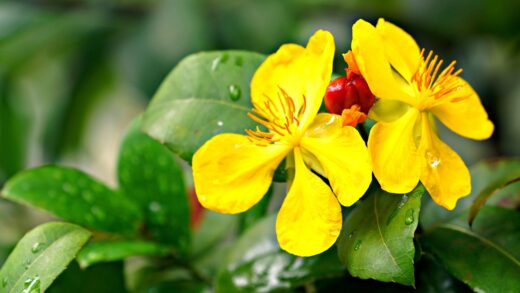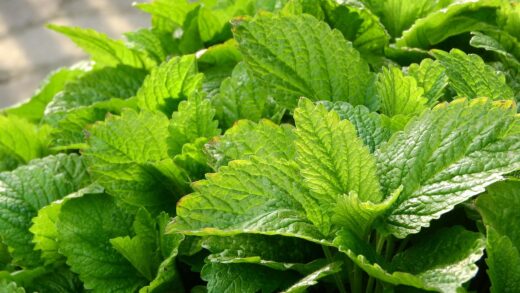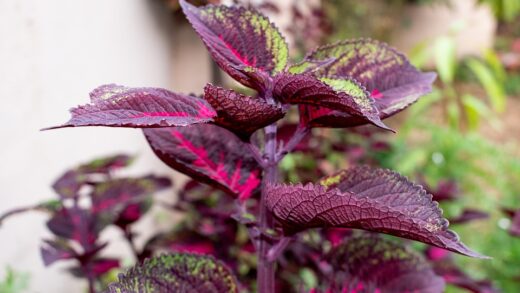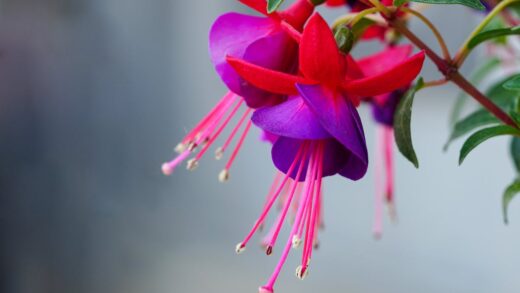The common blue violet, or as many know it, the woolly blue violet, is a truly charming and hardy little perennial plant originating from the forests and meadows of North America. With its characteristic heart-shaped leaves and its vibrant purple or white flowers that bloom in the early spring months, it easily finds its way into the hearts of garden lovers. Although some regard it as a weed due to its spreading nature, with proper care and attention, it can become a wonderful, low-maintenance ground cover that brings life and color to the shady corners of the garden. By understanding this plant’s natural habitat and needs, we can easily create an ideal environment for it, where it will delight us year after year with its modest yet captivating beauty.
From a botanical perspective, the common blue violet belongs to the Viola genus and possesses several unique traits that contribute to its success and hardiness. The plant has a low, basal rosette growth habit with heart-shaped, slightly toothed leaves that emerge directly from the underground rhizome. Its most well-known, fragrant flowers consist of five petals and showcase various shades of blue, purple, and white. Later in the season, the plant also develops cleistogamous flowers, which do not open but ensure abundant seed production and the plant’s effective spread through self-pollination.
In its natural habitat, the common blue violet is most frequently found in the understory of deciduous forests with moist, humus-rich soil, along stream banks, and in wet meadows. This environment provides it with early spring sunlight before the trees leaf out, followed by cool, filtered shade during the summer months. Its ecological role is also significant, as it is one of the very first food sources in early spring for pollinators, such as bees. Its resilience and adaptable nature allow it to thrive in gardens as well, provided we can offer similar conditions.
Many people choose this plant for their garden because it forms an extremely rewarding and low-maintenance ground cover. It is an ideal choice for areas where grass struggles to grow, such as in the shade of trees or taller shrubs. In the spring, it creates a continuous, flowering carpet that suppresses weeds and keeps the soil cool. It is perfectly suited for naturalistic gardens, woodland-style garden sections, or even for creating a “violet lawn,” thereby supporting local wildlife and reducing the time and energy spent on garden maintenance.
Choosing the right growing location
The ideal light conditions for the common blue violet are filtered sunlight or partial shade, which faithfully reflects the conditions of its original woodland habitat. It feels best in a location where it receives enough sunlight for flowering in the early spring period before the deciduous trees leaf out, but is protected from the scorching rays by shade during the summer heat. Although it can tolerate a sunnier exposure, this requires keeping the soil consistently moist; otherwise, its leaves can easily get scorched and the plant will suffer. It also tolerates deeper shade, but its flowering will be less abundant there.
More articles on this topic
Soil quality is crucial for the healthy development of the plant; the common blue violet prefers soils that are rich in organic matter, well-draining, yet also retain moisture. It is best if the soil structure resembles natural forest soil, which is full of decomposing leaves and other organic materials. This environment can be mimicked in the garden by generously mixing mature compost or leaf mold into the soil. Although it is quite tolerant of various soil types, including clay soil, it dislikes standing water, so good drainage must be ensured.
Regarding soil pH, the common blue violet prefers a slightly acidic to neutral pH value (between approximately 6.0 and 7.5). In this pH range, it can most efficiently absorb the necessary nutrients from the soil. Fortunately, it is not among the particularly fussy plants, so it grows well in most average garden soils without needing special pH adjustments. If our soil is strongly alkaline or acidic, it may be worthwhile to correct it with the appropriate soil amendments to ensure optimal growth.
Therefore, the ideal placement in the garden is in the area under deciduous trees, where the alternation of spring sunlight and summer shade is naturally provided. It is an excellent choice for edging shady borders, as a ground cover in woodland gardens, or even along paved pathways where its spread is less of a concern. Many also use it to naturalize lawn areas, where it can be left to spread freely, lending a unique and wildflower-like atmosphere to the garden. In such areas, it offers a wonderful, low-maintenance alternative to traditional grass.
Planting and propagation
The most favorable time for planting the common blue violet is in the spring or fall, when the temperature is more moderate, and the plant has time to establish its roots before the onset of summer heat or winter frosts. If planting nursery-bought plants, dig a planting hole that is slightly larger and deeper than the root ball and loosen the soil. Place the plant in the hole so that its root crown is level with the soil surface, then backfill with soil and gently firm it. A thorough watering after planting is essential to settle the soil around the roots and eliminate any air pockets.
More articles on this topic
The easiest and quickest method of propagation is division, which should be done in early spring before flowering, or in the fall. Using a garden fork, carefully lift a dense, mature violet clump from the soil, taking care to keep the roots intact. The lifted clump can be easily separated into smaller sections by hand or with a sharp knife, ensuring that each new plant has sufficient roots and leaves. The new plants obtained this way should be planted immediately in their final location and watered thoroughly to ensure successful establishment.
Propagation from seed is also possible but requires more patience and attention, as violet seeds need a period of cold treatment, or cold stratification, to germinate. If you sow the seeds outdoors in the fall, nature will perform this process for you, and the seedlings will emerge in the spring. For indoor sowing, the seeds should be mixed with moist sand or vermiculite and placed in a refrigerator for a few weeks before sowing them in the spring. This method is suitable for producing a larger quantity of plants.
It is important to understand the role of the aforementioned cleistogamous flowers in the plant’s spread. These inconspicuous, bud-like, closed flowers develop at the base of the leaves after the showy spring flowering period. Because they are self-pollinating, they are extremely effective at producing seeds without the need for pollinators. The mature seed capsules burst open and scatter the seeds up to several feet away, which is the primary reason for the aggressive spread of the common blue violet and must be considered during its care.
Watering and humidity
In nature, the common blue violet prefers moist soils, so in the garden, it also favors a consistently damp but not waterlogged medium. Regular watering is especially important during the first year after planting, while the plant’s root system strengthens and expands. Later on, especially for stands grown in shady, cool locations, they tolerate drier periods better, but they appreciate supplemental watering during prolonged droughts. The best way to check soil moisture is to stick your finger a few centimeters deep into the soil; if it feels dry, it’s time to water.
The frequency of watering is significantly influenced by the climate and the plant’s location within the garden. A violet planted in a sunnier spot will require much more frequent and abundant watering than its counterpart growing in the shade of a tree in a cool, protected location. The amount of natural precipitation must also be taken into account; during a rainy spring or fall, artificial watering is likely not needed at all. Overwatering can be just as harmful as dehydration, so moderation and assessing the soil’s condition should always be the goal.
The signs of improper watering appear on the plant relatively quickly. Wilted, drooping leaves can indicate both a lack of water and overwatering. In the latter case, the roots do not get enough oxygen due to standing water and can begin to rot, leading to yellowing leaves. This is why well-draining soil is crucial, as it allows excess water to drain away, preventing root rot and other moisture-related problems.
Being a woodland plant, the common blue violet prefers higher humidity, but it feels fine in most temperate gardens without any special intervention. A natural way to increase humidity is to plant them in groups, as the nearby foliage helps retain moisture around the leaves. Covering the soil with organic mulch also helps to reduce soil evaporation and create a more favorable microclimate. In general, its humidity requirements do not pose a particular challenge for the gardener.
Fertilizing and soil care
The common blue violet is not a particularly heavy-feeding plant, so its care in this regard is not complicated. If the soil is already rich in organic matter and humus, the plant will likely not require any supplemental fertilization at all. In fact, excessive fertilization, especially with high-nitrogen fertilizers, can be detrimental. This is because it stimulates lush leaf growth at the expense of flowers and can make the plant more susceptible to diseases and pests.
The most natural and effective way to supplement nutrients is to spread a thin layer of mature compost or leaf mold around the base of the plants in the spring. This organic material breaks down slowly, gradually releasing necessary nutrients into the soil while also improving its structure, water retention capacity, and stimulating soil life. This method perfectly mimics the natural process by which forest litter decomposes to nourish the undergrowth, thus providing the most ideal medium for the violet.
Supplemental fertilization may only be necessary if the soil is particularly poor and sandy, or if the plant’s growth is weak and its leaves are pale and yellowish. In such cases, applying a balanced, slow-release, general-purpose granular fertilizer in early spring can help. It is important not to apply nutrients late in the growing season, in late summer or fall, as this would encourage new, tender growth that would not have time to harden off before winter and could easily suffer frost damage.
One of the most important elements of soil care is mulching. Covering the soil surface around the plants with organic mulch, such as shredded bark, wood chips, or chopped leaves, has numerous benefits. Mulch helps to conserve soil moisture, thus reducing the need for watering, prevents the growth of weeds, and keeps the soil cool during the summer heat. As the organic mulch slowly decomposes, it continuously enriches the soil with nutrients, contributing to the healthy development of the violet in the long term.
Pests, diseases, and managing spread
The common blue violet is an extremely resilient plant that is generally avoided by pests and diseases, especially when grown in optimal conditions. Occasionally, however, aphids or spider mites may appear, especially on weakened or stressed plants. The most effective defense against them is to wash them off the leaves with a strong jet of water or, in more severe cases, to use an insecticidal soap spray. Slugs and snails can also chew on young leaves, especially in damp, rainy periods; they can be controlled using standard methods.
Among diseases, fungal infections such as powdery mildew or root rot can pose a threat. These typically appear when the plants are too dense, air cannot circulate freely between the leaves, or when the soil is consistently overwatered and waterlogged. The key to prevention is maintaining proper planting distance, ensuring good air circulation, and avoiding overwatering. If an infection does appear, promptly removing the affected leaves and improving the conditions can prevent it from spreading further.
For most gardeners, the biggest challenge is not pests or diseases, but the vigorous, aggressive spread of the common blue violet. The plant quickly colonizes new areas with its underground rhizomes and by scattering thousands of seeds from the aforementioned self-pollinating cleistogamous flowers. If not managed, it can easily overrun flower beds and lawns, displacing other, less hardy plants. It is precisely because of this characteristic that many consider it a weed rather than an ornamental plant.
There are several strategies to control its spread. Young plants appearing in unwanted places should be regularly pulled out by hand, which is relatively easy while they are small. Deadheading the showy spring flowers after they fade will prevent seed formation from them, but it is ineffective against the cleistogamous flowers. The most effective method to contain its spread is to use physical barriers, such as garden edging sunk into the ground, which prevents the rhizomes from spreading further. Violets growing in the lawn are weakened by regular mowing, but they are extremely difficult to eradicate.
The common blue violet in the garden and beyond
The common blue violet can be used versatilely in garden design, especially in shady, naturalistic-style gardens. It is excellent as a living mulch or ground cover under larger trees and shrubs where grass no longer thrives. Here, it forms a dense, green carpet that bursts into bloom in spring, suppresses weeds, and protects the soil from drying out. The concept of a “violet lawn” is also becoming increasingly popular, using violets instead of or mixed with traditional grass to create a low-maintenance, pollinator-friendly, and aesthetic surface.
When selecting companion plants, it is worth choosing other shade-loving perennials with similar needs to create a harmonious and diverse plant community. It looks great together with ferns, hostas, hellebores, and early spring-blooming bulbs like daffodils, scilla, or crocus. These plants not only complement each other aesthetically but also provide alternating foliage and flower interest throughout the season, keeping that part of the garden interesting all year round.
By planting the common blue violet, we can significantly contribute to supporting local wildlife and biodiversity. Its early spring flowers are one of the first and most important nectar sources for bees and other pollinators waking from their winter dormancy. In addition, the plant’s leaves serve as a food source for the caterpillars of several butterfly species, especially Fritillaries. A garden area covered with violets can thus become a small ecosystem that attracts and nourishes beneficial creatures.
Last but not least, it is worth mentioning that the common blue violet is also an edible and medicinal plant, although one must always be absolutely certain of the species identification before use. Both the young leaves and the flowers are edible, high in vitamins A and C, and add a special flavor and appearance when mixed into salads or used as a garnish for dishes. It has long been used in folk medicine to alleviate various respiratory ailments, but one should always consult an expert before any medicinal use.

















